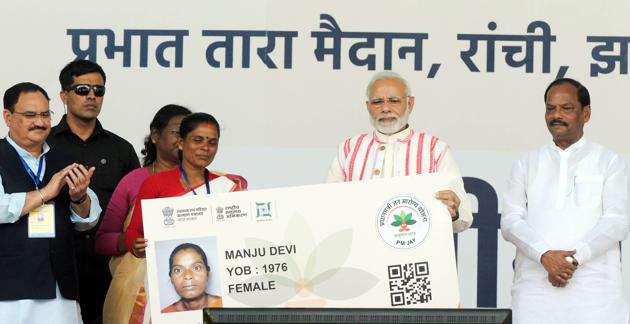Ayushman Bharat reforms are timely and ambitious, but need effective implementation
The poor and vulnerable stand to benefit, and to do so significantly. Whether for a struggling farmer with an injury; a roadside fruit seller who has suffered a stroke; or a family whose child has life-threatening pneumonia, the PMJAY should increase the access and affordability of potentially life-saving hospital care. That is why PMJAY is a crucial part of the now well-known set of Ayushman Bharat reforms
India recently launched a major national health reform to rapidly extend access to hospital care for 500 million poor and vulnerable people. The Pradhan Mantri Jan Arogya Yojana (PMJAY) aims to cover the costs of their inpatient care.

The scheme guarantees eligible families are covered for inpatient expenses of up to ₹5 lakh per year. It will be implemented in conjunction with existing state insurance schemes, and most states and union territories have already got agreements with PMJAY. The scheme covers inpatient care received in either public or private hospitals, using a fixed price schedule.
The poor and vulnerable stand to benefit, and to do so significantly. Whether for a struggling farmer with an injury, a roadside fruit seller who has suffered a stroke, or a family whose child has life-threatening pneumonia, the PMJAY should increase the access and affordability of potentially life-saving hospital care. That is why PMJAY is a crucial part of the now well-known set of Ayushman Bharat reforms.
Another major component of the reforms, launched in April this year, is the extension of comprehensive primary health care. Existing subcentres are being upgraded to health and wellness centres across the country to deliver a wide range of services, including for maternal and child health and infectious diseases, but also for increasingly common conditions like high blood pressure and diabetes. These centres are staffed by a new cadre of health workers and supplied with free essential medicines. This second reform is also large in scale: 150,000 health and wellness centres are due to be created over the next four years.
Together, these two reforms are expected to advance India’s pursuit of universal health coverage (UHC). This is a bold ambition to ensure all people can access quality health services when and where they need them, without suffering financial hardship, which is also one of the WHO South-East Asia Region’s Flagship Priorities. The reforms are complemented by intensified action in public health programmes such as TB and immunisation. There is, of course, progress to build on. For example, the country has achieved a remarkable decline in maternal and child mortality through progressively increased health service coverage in recent years.
Major inequalities nevertheless remain, and millions of people across India are pushed into poverty because of out-of-pocket spending on health care — at least 4% of the population. That is precisely why the Ayushman Bharat reforms are so timely. Importantly, they are being rolled out simultaneously and fast. Since April, over 2000 health and wellness centres have become operational. From the day PMJAY was launched, almost half of all eligible families are now covered for hospital care. There is a commitment in the National Health Policy to raise the percentage of GDP allocated to health from 1.2% today to 2.5% by 2022 that should contribute towards the cost of the reforms.
Crucially, however, that money must also be spent wisely: there is good evidence that investment in frontline services is cost-effective — all the best buys WHO recommends can be delivered there. At the same time, this must be backed up by effective and affordable hospital care. During the reforms’ roll-out, special attention is needed to build confidence in and demand for the country’s upgraded primary care services, as well as ensure hospital care is accessed when required. If not, the bypassing of the primary care system will remain common, diluting the reforms’ expected benefits.
There will be many challenges during implementation. That is normal, and makes the need for real-time monitoring of implementation, and of progress against reform objectives, critical from the start. This will allow problems to be detected early on, thereby enhancing accountability, as well as facilitating course corrections where necessary to ensure the poor and vulnerable really do benefit.
That is an important point. The combined Ayushman Bharat reforms, with PMJAY the latest to be launched, are both timely and ambitious. They have immense potential, with everyone having a role to play in ensuring their success and demonstrating what can be achieved when vision and resolve are matched by effective implementation.
Poonam Khetrapal Singh is the Regional Director, WHO South-East Asia
The views expressed are personal






